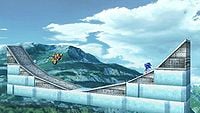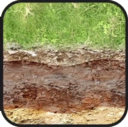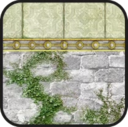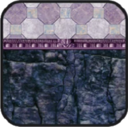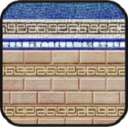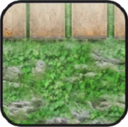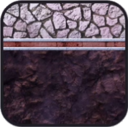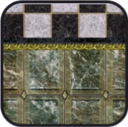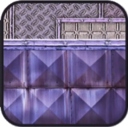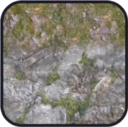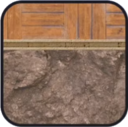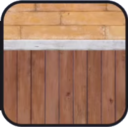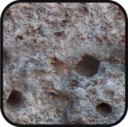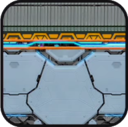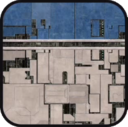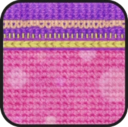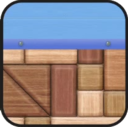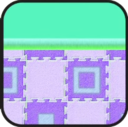Stage Builder: Difference between revisions
mNo edit summary |
No edit summary |
||
| Line 155: | Line 155: | ||
*The futuristic chamber background image of ''Super Smash Bros. Brawl'' is similar to the background in the [[Subspace Emissary]]'s [[Research Facility (Part II)|Research Facility II]] where players fight the two [[False Character|False Samuses]] or when [[Samus]] first encounters [[Ridley]]. Similarly, the ruins background image can be seen in the distance behind part of [[The Ruins]]. | *The futuristic chamber background image of ''Super Smash Bros. Brawl'' is similar to the background in the [[Subspace Emissary]]'s [[Research Facility (Part II)|Research Facility II]] where players fight the two [[False Character|False Samuses]] or when [[Samus]] first encounters [[Ridley]]. Similarly, the ruins background image can be seen in the distance behind part of [[The Ruins]]. | ||
*In ''Super Smash Bros. Brawl'', if one attempts to change the way that a spring is facing, the spring's color will change to green. | *In ''Super Smash Bros. Brawl'', if one attempts to change the way that a spring is facing, the spring's color will change to green. | ||
*''SSB3DS'' is the only Smash game to not contain a Stage Builder, excluding ''SSB64'' and ''SSBM'', which Stage Builder wasn't introduced until ''SSBB''. | |||
==See also== | ==See also== | ||
Revision as of 05:41, December 15, 2014
The Stage Builder (ステージ作り, Making Stages) is a feature in Super Smash Bros. Brawl and Super Smash Bros. for Wii U that allows players to create their own custom stages.
In Super Smash Bros. Brawl
Builders must choose to create a small, medium, or large stage, which will affect the number of parts that can be placed and the location of blast lines. Next, the builder selects a theme: a mountain, a ruin-ish building, or a futuristic chamber. Each theme has its own set of special stage elements which allow for slight variations in stage design depending on what theme is used. The final step before building is picking music, which can be any track that has been unlocked (but only one track may be used per stage), though the player will have a chance to choose a different track after the stage itself is built.
There are different structures and building materials the player can use depending on the background chosen earlier. There are three different sizes for most of the structures, as well. Unless by hacking, the player, however, is limited in the number of parts they can use per stage. Each piece used will use up a certain amount of memory for the map, and some pieces take up more memory than others. Once ready, the player can test the stage through the editor; however, the player is limited to using Mario with the default controls for the controller being used. One can also switch back to the editing screen to make more changes. Custom stages are compatible with SD cards. The limit to the number of custom stages a player can have depends on how much room one has in their internal Wii memory or SD card. The player can also send stages to their friends.
Types of parts the player can use in this mode come in three categories. Standard pieces include things like blocks, platforms, ramps and stairs. Structures are available as well, such as trees, mushrooms and rock arches. Features include Drop Blocks, springs and other things that are not simply platforms. Stages require a minimum of four horizontal areas (for spawning points) for the game to allow them to be saved.
Ultimately, in this mode, the player is limited by their own level of creativity (and memory usage). Many people have modeled stages after stages from Super Smash Bros. and Super Smash Bros. Melee.
Starter parts
There are three categories of parts: Floors, Structures and Features. The following list gives the name (unofficial), description, variations by theme and size of each available part.
Floors:
- Platform: A drop through platform, texture, 1x1
- Diagonal Platform: A slanted drop through platform, texture, 1x2
- Short Platform: A half-sized drop through platform; when placed in a line, small gaps are set in between each of these, texture, 1x1
- Block: a normal block that can have a ledge, texture, 1x1
- Stair Block: A simple stair block; able to walk up properly, texture, 1x2
- Ramp Block: A right-angle triangle shaped block able to be walked on; characters slide downwards when on it, texture, 1x2
- Long Ramp Block: A bigger version of the Ramp Block, texture, 2x2
Structures 1st part
- Mountains:
- Ruins: Pillar, good for wall jumping, 3x3
- Chamber:
2nd part
- Mountains:
- Ruins: Stone slanted block, flat then slanted on the right side, 2x4
- Chamber:
3rd part
- Mountains:
- Ruins: A platform with a top, good for upward combo's, 3x4
- Chamber:
4th part
- Mountains:
- Ruins: slanted stone block, 2x4
- Chamber:
5th part
- Mountains:
- Ruins: Small pillar with slanted platform, top platform drop through,
- Chamber:
Features
- Horizontal moving platform: drop through, no changes, 1x5
- Vertical moving platform: drop through, no changes, 5x1
- Ice block: slippery block with no ledges, no changes, 1x1
- Drop block: drops downwards, no changes, 3x1
- Spikes: Causes 15 damage when hit by spike, no changes, 2x1
- Stairs: Simple climbable stairs, no, 1x1
Unlockable Parts
There are also certain parts and features that can be unlocked to use in the Stage Builder.
- Spring: Green or Orange spring (Green goes higher), no, 1x2
- Conveyor belt: Moving conveyor belt moves all things in one direction, no, 2x2
- Rotating Platform: Spins four platforms in a Ferris Wheel motion, no, 4x5
- Edit Parts A: Play 10 times or more on created stages
- Edit Parts B: Create 5 or more stages in Stage Builder (not including the 3 sample stages)
- Edit Parts C: Create 15 or more stages in Stage Builder (not including the 3 sample stages)
Use in modding
Modifications of Stage Builder
Due to what have been perceived to be arbitrary limitations of the Stage Builder mechanism, a multitude of hacks via USB Gecko and external applications such as Stage Studio have allowed Smashers to create more elaborate stages by removing most of these limitations; workarounds allow for overlapping blocks, unlimited blocks in a single level, and more complicated movements for some platforms.
Some mods also allow for a beta block in the Stage Builder; referred to as a "bump", the block essentially is a smooth bump.
As an exploit
Because of how Stage Builder loads custom data, a common method to hacking the Wii console involves exploiting this loading mechanism. Referred to as the Smash Stack, forcing Stage Builder to load a file that is too large can allow for a user to load custom data; this method of hacking is common in order to add the Homebrew Channel to the Wii, and it is also the main method of loading gameplay mods such as Project M.
In Super Smash Bros. for Wii U
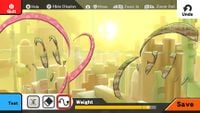
In Super Smash Bros. for Wii U, the Stage Builder was changed immensely. Players now have much more freedom when creating stages, with the ability to draw platforms of any shape using the Wii U's GamePad. An option is given to either make the platform able to grab by players or not. Also, a grid can be applied by pressing the X button for accuracy when placing or drawing. Jump-through platforms can be made by making a line, and tapping it. The ability of downloading and sharing stages via Miiverse will be available after a future update is downloaded.
Five new backgrounds share two textures that can be given to drawn platforms, whilst they have three unique textures of their own.
| A cloudy sky, similar to the backgrounds of Battlefield and Temple. Floating pillars appear in the background. | A rocky mountain area. A volcano is in the background and its lava flows all over the rock. | A view of an ocean. Rocky structures appear in the water. | An area in outer space. A giant space craft appears in the background. | A modern city-like structure made of rounded shapes. The Super Smash Bros. logo acts as the sun. |
There are four types of special features that can be inserted.
| Image | Name | Information |
|---|---|---|
| Spring (small) | Works just like the spring in the predecessor. | |
| Spring (large) | A larger spring, that bounces players higher. | |
| Cannon (weak) | Similar to Barrel Cannons. | |
| Cannon (strong) | A larger cannon, that shoots players further. | |
| Moving Platform (small) | Slowly moves from one point to the other, with an unlimited path. | |
| Moving Platform (large) | Three times longer than the small one. | |
| Magma (thin) | Painted over platforms, and damages 10% to players. Oddly, it can cause more weight depending on how much was drawn, no matter how much is used in the final result. | |
| Magma (thick) | Works just like the thin one, but you paint twice as thick. |
| Shared Textures | ||
|---|---|---|
| Cloudy Textures | ||
| Volcanic Textures | ||
| Ocean Textures | ||
| Space Textures | ||
| City Textures | ||
Trivia
- The futuristic chamber background image of Super Smash Bros. Brawl is similar to the background in the Subspace Emissary's Research Facility II where players fight the two False Samuses or when Samus first encounters Ridley. Similarly, the ruins background image can be seen in the distance behind part of The Ruins.
- In Super Smash Bros. Brawl, if one attempts to change the way that a spring is facing, the spring's color will change to green.
- SSB3DS is the only Smash game to not contain a Stage Builder, excluding SSB64 and SSBM, which Stage Builder wasn't introduced until SSBB.
See also
External links
| Super Smash Bros. Brawl menu items | |
|---|---|
| Group | Brawl (Time · Stock · Coin Battle · Team Battle) · Rules · Special Brawl · Rotation · Tourney · Names |
| Solo | Classic · All-Star · Adventure Mode: The Subspace Emissary · Events · Stadium (Target Smash!! · Home-Run Contest · Multi-Man Brawl · Boss Battles) · Training |
| Wi-Fi | Spectator Mode · With Anyone · With Friends |
| Vault | Trophies & Stickers (Trophy Gallery · Trophy Hoard · Coin Launcher · Sticker Album · Sticker Center) · Stage Builder · Album · Challenges · Replays · Masterpieces · Chronicle |
| Options | Screen · Deflicker · Rumble · Controls · Sound · My Music · Erase Data |
| Data | Movies · Records (Group Records · Brawl Records · Notices) · Sound Test |


